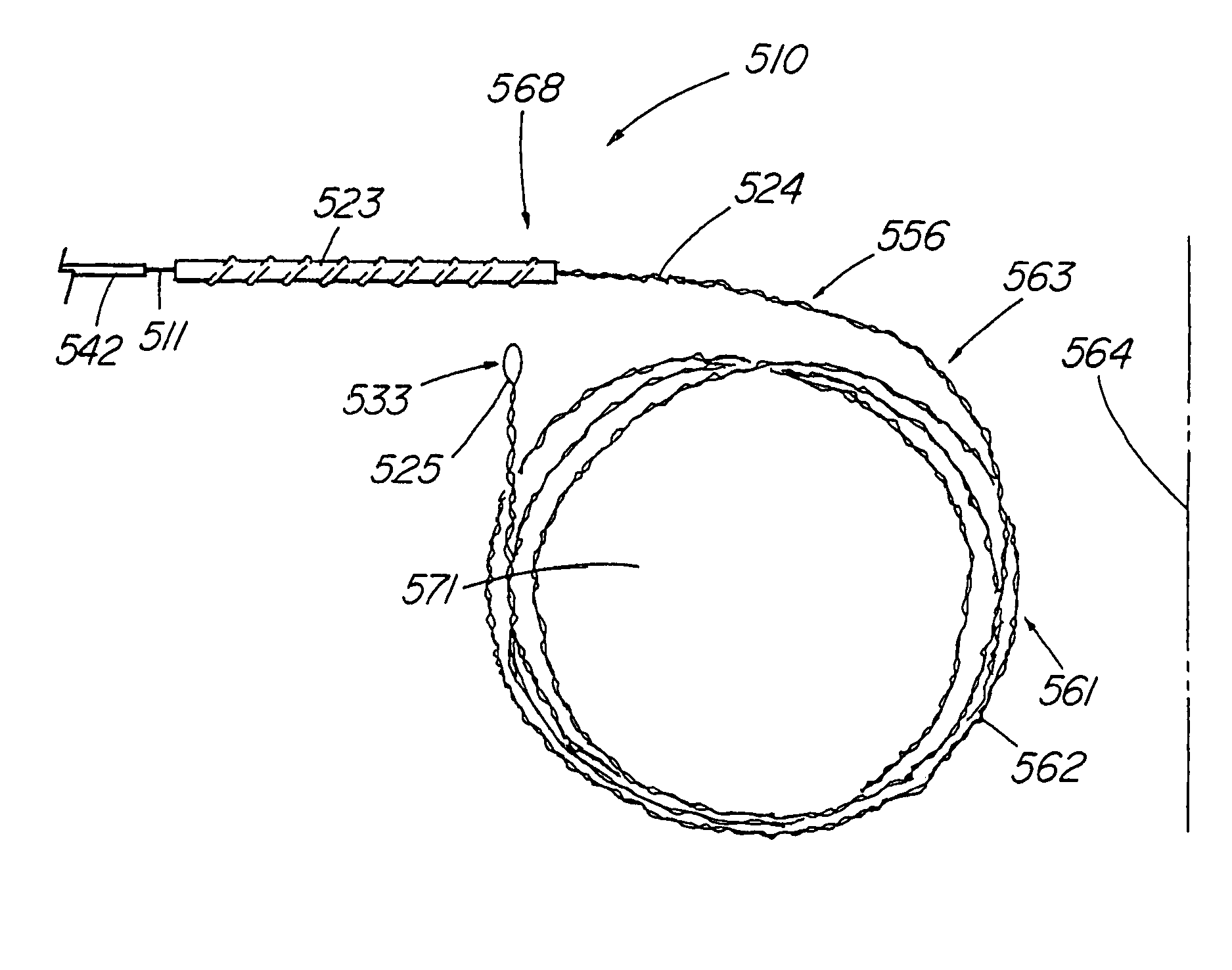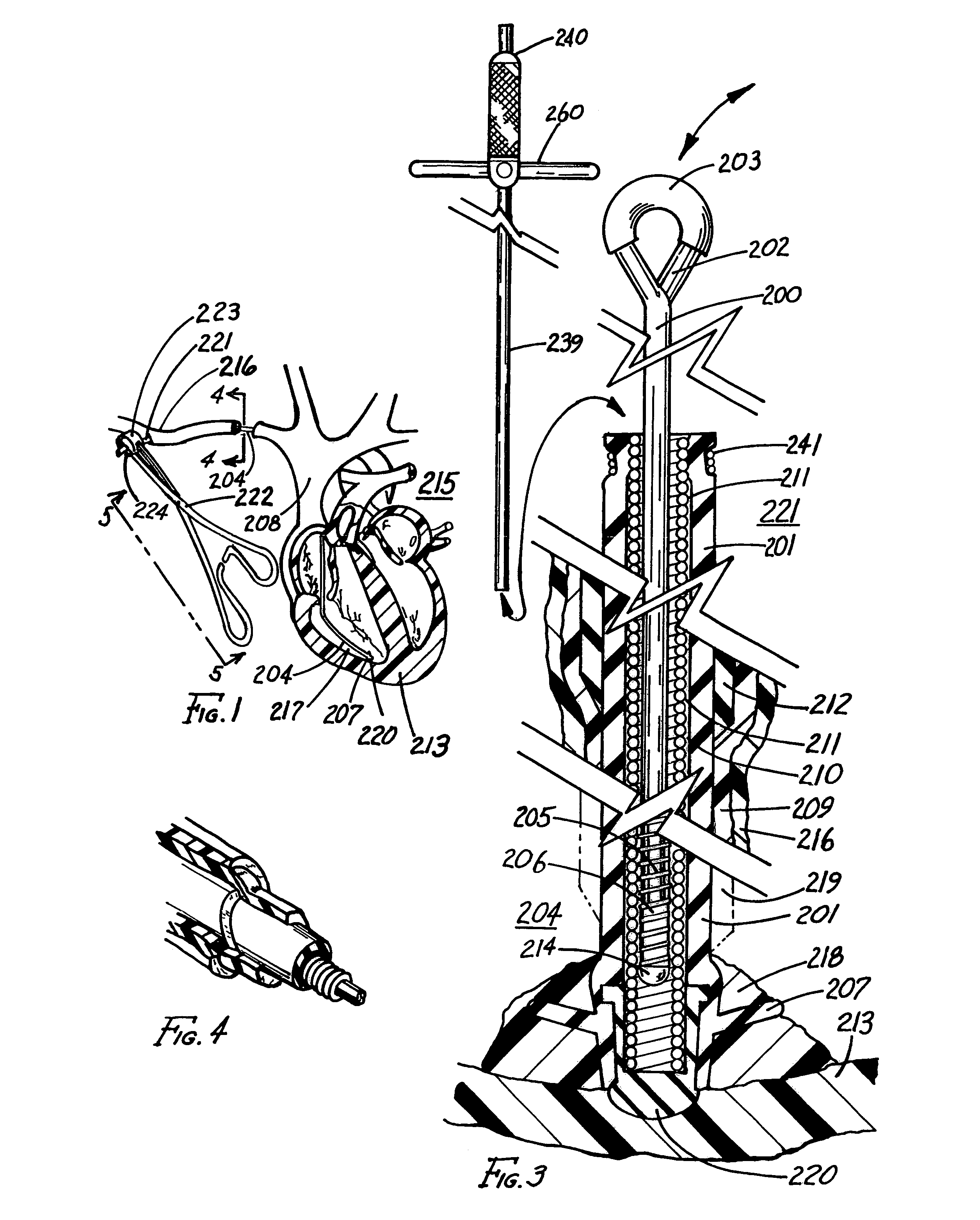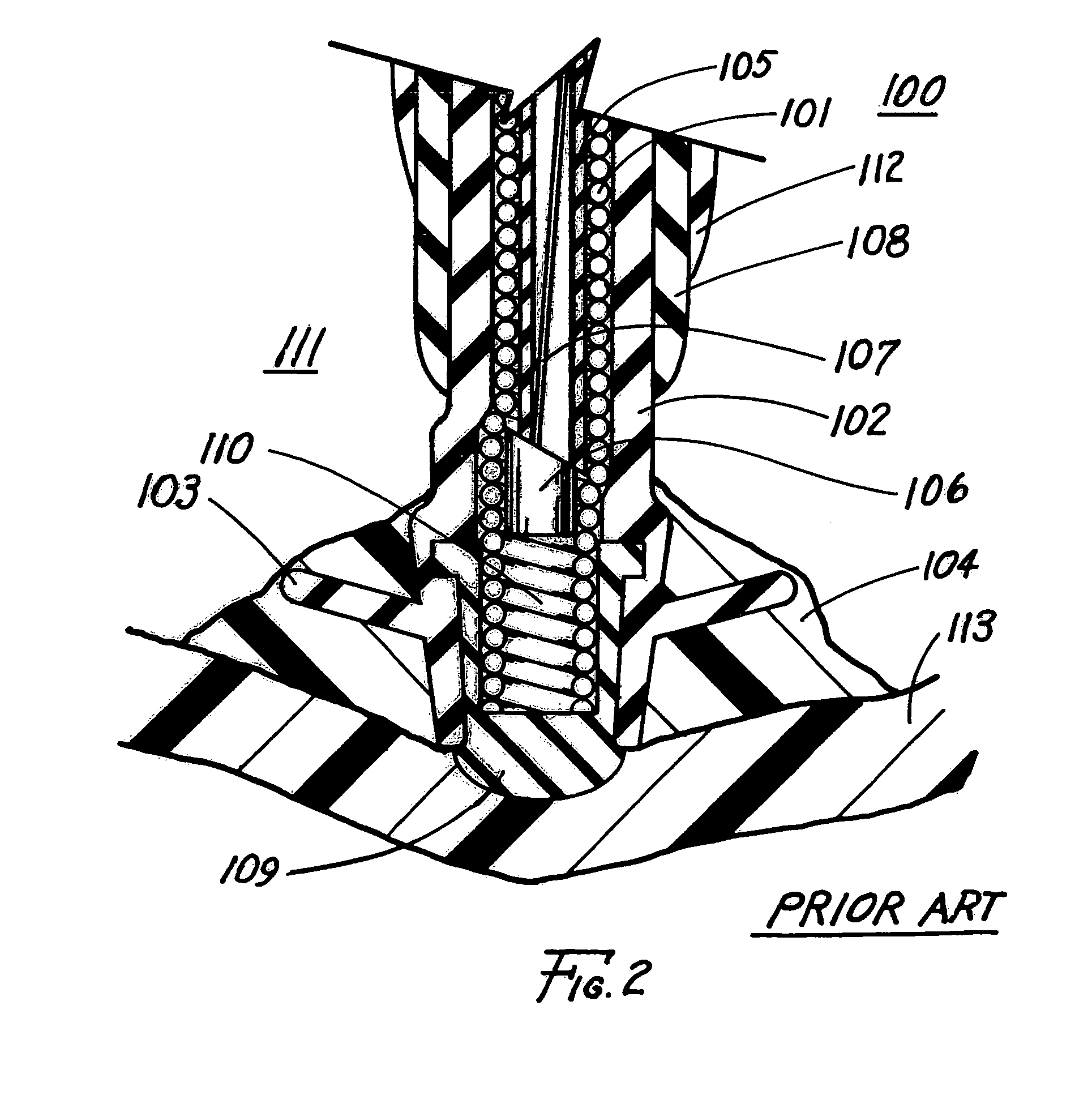Method of removing an elongated structure implanted in biological tissue
- Summary
- Abstract
- Description
- Claims
- Application Information
AI Technical Summary
Benefits of technology
Problems solved by technology
Method used
Image
Examples
fourth embodiment
[0094]Depicted in FIG. 13 is illustrative removal apparatus 1301 inserted in the longitudinal passageway 210 of coiled structure 211. Removal apparatus 1301 includes a control tube 1302 having a distal end with a spiral or helical ridge 1303 formed therein. Alternatively, a number of barbs are formed in the contoured distal end of control tube 1302. The distal end includes a plurality of slits 1307 or an opening thereat for expanding the ridge or barbs into the coiled structure. Actuator rod 1304 is inserted into passageway 1305 to engage the distal end. When engaged, actuator rod expands the ridge or barbs in a radial direction, as shown by arrows 1308, to engage the coiled structure of the pacemaker lead. As a result, the expanded ridge or barbs secure the control tube to the coiled structure for controlling the movement thereof.
fifth embodiment
[0095]Depicted in FIG. 14 is illustrative removal apparatus 1401 inserted in longitudinal passageway 210 of coiled structure 211. The removal apparatus includes control tube 1402 and actuator rod 1403 extending through hollow passageway 1404 of the control tube. The apparatus also includes a diagonally-slotted sleeve 1405 that is positioned between the distal ends of the control tube and actuator rod. The actuator rod also extends through hollow passageway 1406 of the sleeve. Attached to the distal end of the actuator rod is beveled tip 1407 having an outside diameter approximating the diameter of the control tube and the nominal diameter of the slotted sleeve. Similarly, the distal end of the control tube is beveled to engage and expand the slotted sleeve. To expand the slotted sleeve, the actuator rod is pulled, as indicated by arrow 1408, to engage the sleeve against the beveled edges of the control tube and the rod. As a result, the sleeve is expanded to a position for engaging ...
PUM
 Login to View More
Login to View More Abstract
Description
Claims
Application Information
 Login to View More
Login to View More - R&D
- Intellectual Property
- Life Sciences
- Materials
- Tech Scout
- Unparalleled Data Quality
- Higher Quality Content
- 60% Fewer Hallucinations
Browse by: Latest US Patents, China's latest patents, Technical Efficacy Thesaurus, Application Domain, Technology Topic, Popular Technical Reports.
© 2025 PatSnap. All rights reserved.Legal|Privacy policy|Modern Slavery Act Transparency Statement|Sitemap|About US| Contact US: help@patsnap.com



